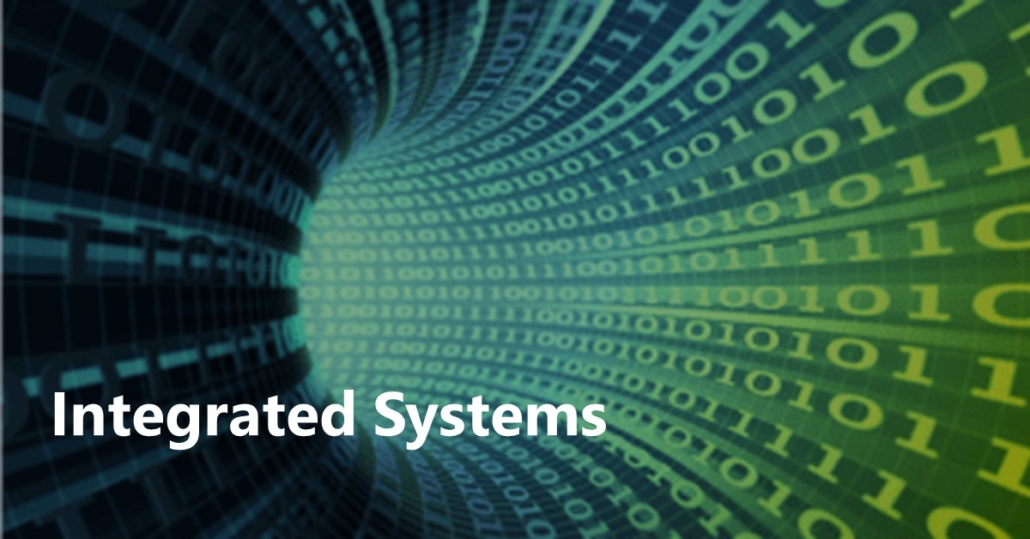
Our Integrated Systems department innovates, designs, and prototypes high-performance intelligent distributed systems, applications, and services on complex, large-scale communication networks like 5G and beyond. We develop next-generation wireless technologies for sensing the world, localizing critical assets, and improving the capacity, coverage, and scalability of communication networks like 5G and beyond.
New application needs have always sparked human innovation. A decade ago, cloud computing enabled high-value enterprise services with a global reach and scale but with several minutes or seconds of delay. Large-scale services like enterprise resource planning (ERP) were a corner-case scenario, often designed as one-off systems. Today, applications like social networks, automated trading, and video streaming have made large-scale services the norm rather than the exception. In the future, advances in 5G networks and an explosion in smart devices, microservices, databases, networking, and computing tiers will make services so complex that humans cannot tune or manage them.
The sheer scale, dynamic nature, and concurrency in services on 5G slices will require them to be intelligent and autonomic. They will need to continuously self-assess, learn, and automatically adjust for resource needs, data quality, and service reliability. The need for increased efficiency and reduced latency between measurement and action drives our design of real-time distributed systems for feature extraction, computation, and machine learning on multimodal streaming data. We are conducting extensive research on creating end-to-end solutions using multimodal sensing technologies in the retail, public safety, and transportation domains.
Our 5G cellular network research encompasses the development of technologies on the Radio Access Network (RAN), the mobile edge, and the 5G LAN. Within the RAN, we are developing technologies that optimize massive MIMO/MU-MIMO deployments and millimeter-wave access (e.g., transmission at 28 GHz to nomadic/mobile users). At the mobile edge (MEC), we focus on virtualization, scalability, and cloud deployment of appropriate services. Our 5G LAN research extends the benefits of 5G slicing technology to enterprise LANs to position the enterprise as the new MEC.
Read our news and publications from our world-class team of researchers from our Integrated Systems department.
First responders, a critical lifeline of any society, often find themselves in precarious situations. The ability to track them in real-time in unknown indoor environments would significantly contribute to the success of their mission as well as their safety. In this work, we present the design, implementation and evaluation of TrackIO–a system capable of accurately localizing and tracking mobile responders real-time in large indoor environments. TrackIO leverages the mobile virtual infrastructure offered by unmanned aerial vehicles (UAVs), coupled with the balanced penetration-accuracy tradeoff offered by ultra-wideband (UWB), to accomplish this objective directly from outside, without relying on access to any indoor infrastructure. Towards a practical system, TrackIO incorporates four novel mechanisms in its design that address key challenges to enable tracking responders (i) who are mobile with potentially non-uniform velocities (e.g. during turns), (ii) deep indoors with challenged reachability, (iii) in real-time even for a large network, and (iv) with high accuracy even when impacted by UAVs position error. TrackIOs real-world performance reveals that it can track static nodes with a median accuracy of about 11.5m and mobile (even running) nodes with a median accuracy of 22.5m in large buildings in real-time.
The advances in unmanned aerial vehicle (UAV) technology have empowered mobile operators to deploy LTE base stations (BSs) on UAVs, and provide on-demand, adaptive connectivity to hotspot venues as well as emergency scenarios. However, today’s evolved packet core (EPC) that orchestrates the LTE RAN faces fundamental limitations in catering to such a challenging, wireless and mobile UAV environment, particularly in the presence of multiple BSs (UAVs). In this work, we argue for and propose an alternate, radical edge EPC design, called SkyCore that pushes the EPC functionality to the extreme edge of the core network – collapses the EPC into a single, light-weight, self-contained entity that is co-located with each of the UAV BS. SkyCore incorporates elements that are designed to address the unique challenges facing such a distributed design in the UAV environment, namely the resource-constraints of UAV platforms, and the distributed management of pronounced UAV and UE mobility. We build and deploy a fully functional version of SkyCore on a two-UAV LTE network and showcase its (i) ability to interoperate with commercial LTE BSs as well as smartphones, (ii) support for both hotspot and standalone multi-UAV deployments, and (iii) superior control and data plane performance compared to other EPC variants in this environment.


